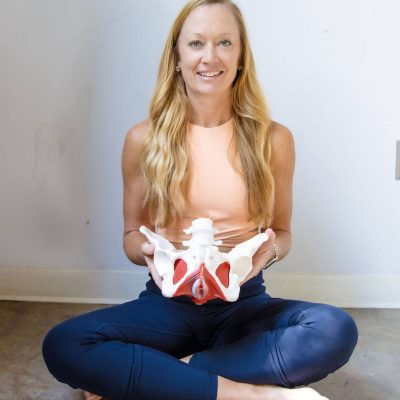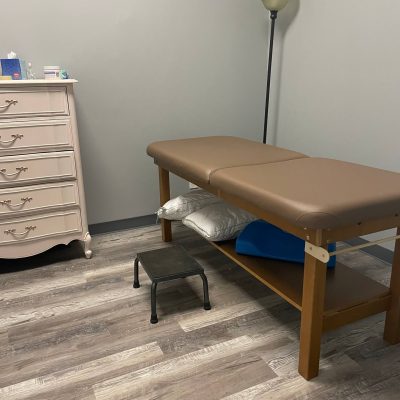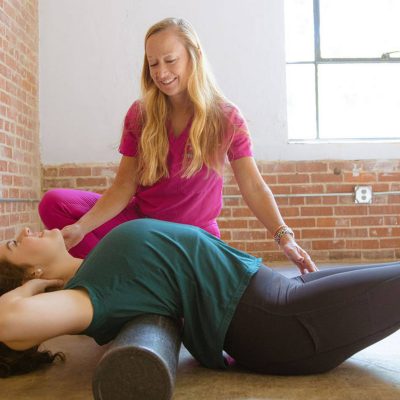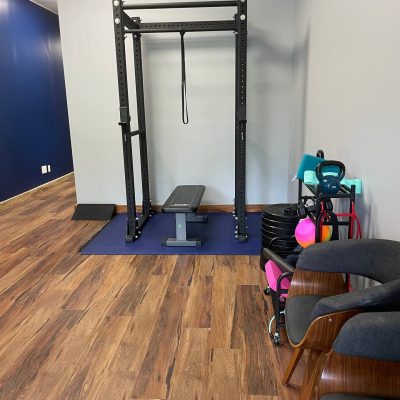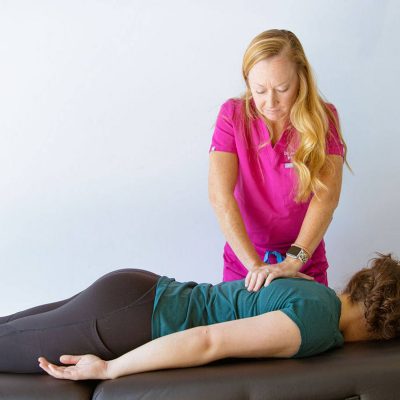Low back pain (LBP) is a condition of pain to the lumbar spine with or without symptoms radiating down the legs. The link between LBP and pelvic floor dysfunction (PFD), particularly in women, is becoming more evident in research. Pelvic floor dysfunction (PFD) occurs when the muscles that comprise the pelvic floor become uncoordinated which can adversely cause urinary urge, frequency, or incontinence, pelvic organ prolapse, constipation, pain with sex, and/or bowel incontinence. Uncoordination of the pelvic floor muscles may mean they have poor strength and endurance, increased tension, shortened length, and overactivity. Pelvic floor muscles have attachments from the groin muscles, deep abdominal muscles, and spinal muscles, all of which need to be coordinated as well. The diaphragm, transversus abdominis, PFM, and multifidus work together to influence posture through intra-abdominal pressure regulation and thoracolumbar fascial tension. Current evidence shows that individuals with low back pain have a significant decrease in pelvic floor function compared to individuals without low back pain.
Low back pain (LBP) is one of the most common musculoskeletal conditions. Approximately 70-80% of the population will experience at least one episode of LBP during their lifetime. Some causes of LBP include trauma, disease, and poor postural habits. Over 25% of all women experience PFD. The true prevalence of PFD is underestimated due to lack of standardized definitions and under-reported symptoms. PFD also involves psychosocial implications that can greatly affect the patient’s quality of life. PFD does not typically have one specific cause. The development of PFD most likely involves many components.
The major risk factors for PFD are pregnany/childbirth, hormonal changes, obesity, pelvic surgery, hip or tailbone injury, high stress, abnormal posture, among others. A longitudinal study on younger, middle-age and older women reported that women with pre-existing incontinence, gastrointestinal problems, and breathing disorders were more likely to develop LBP than women without these problems. This can be the result of abnormal postural activity of the trunk muscles including muscles of respiration and continence which provide support to the spine and pelvis.
The pelvic floor forms the inferior border of the abdominal-pelvic cavity. It supports the abdominal-pelvic organs and the PFM are the only transverse load-bearing muscle group in the body. These muscles function as a unit instead of separately contracting. They play an important role in maintaining and decreasing intra-abdominal pressure during functional tasks such as lifting, sneezing, coughing, and laughing to prevent bladder and bowel incontinence. The PFM, along with the deep abdominals and multifidus, help to stabilize the trunk and control intra-abdominal pressure in response to movement.
If you have LBP and PFD, Pelvic Floor Physical Therapy can help. Find a therapist who takes a thorough history and clears any red flags. Find a therapist who evaluates not just the Pelvic Floor internally, but assesses the entire body. Posture should be evaluated as well as strength and range of motion of the feet, knees, hips, and spine. Lifestyle habits should be discussed including diet, sleep, exercise, and sexual habits.
How do you know if you have Pelvic Floor Dysfunction? If you can answer YES to any of these questions, you would benefit from an evaluation by a Pelvic Floor Physical Therapist.
● Do you urinate more than 6-8 times during daytime hours?
● Do you ever have urine leakage during activities such as coughing, sneezing, laughing, or exercise?
● Do you ever have urine leakage associated with sudden strong urge?
● Do you have trouble reaching the toilet in time?
● Have you ever lost bowel control?
● Do you have pain with sex?
● Do you get up to urinate during the middle of the night?
Do you have Pelvic Floor Dysfunction and/or Low Back Pain? Contact us to schedule a thorough evaluation and get started on the right track to improving your Pelvic Health!
Magic City Physical Therapy
Hoover, AL
Instagram @magiccitypt
Phone (205)202-0874
Fax (205)573-3709
Sources:
Eliasson K, Elfving B, Nordgren B, Mattsson E. Urinary incontinence in women with low back pain. Manual Therapy. June 2008;13(3):206-212.
Dufour S, Vandyken B, Forget MJ, Vandyken C. Association between lumbopelvic pain and pelvic floor dysfunction in women: A cross sectional study. Musculoskeletal Science and Practice. 2018 Apr 1;34:47-53.
Nygaard I, Barber MD, Burgio KL, Kenton K, Meikle S, Schaffer J, Spino C, Whitehead WE, Wu J, Brody DJ, Pelvic Floor Disorders Network. Prevalence of symptomatic pelvic floor disorders in US women. Jama. 2008 Sep 17;300(11):1311-6.
Arab AM, Behbahani RB, Lorestani L, Azari A. Assessment of pelvic floor muscle function in women with and without low back pain using transabdominal ultrasound. Manual therapy. 2010 Jun 1;15(3):235-9.

